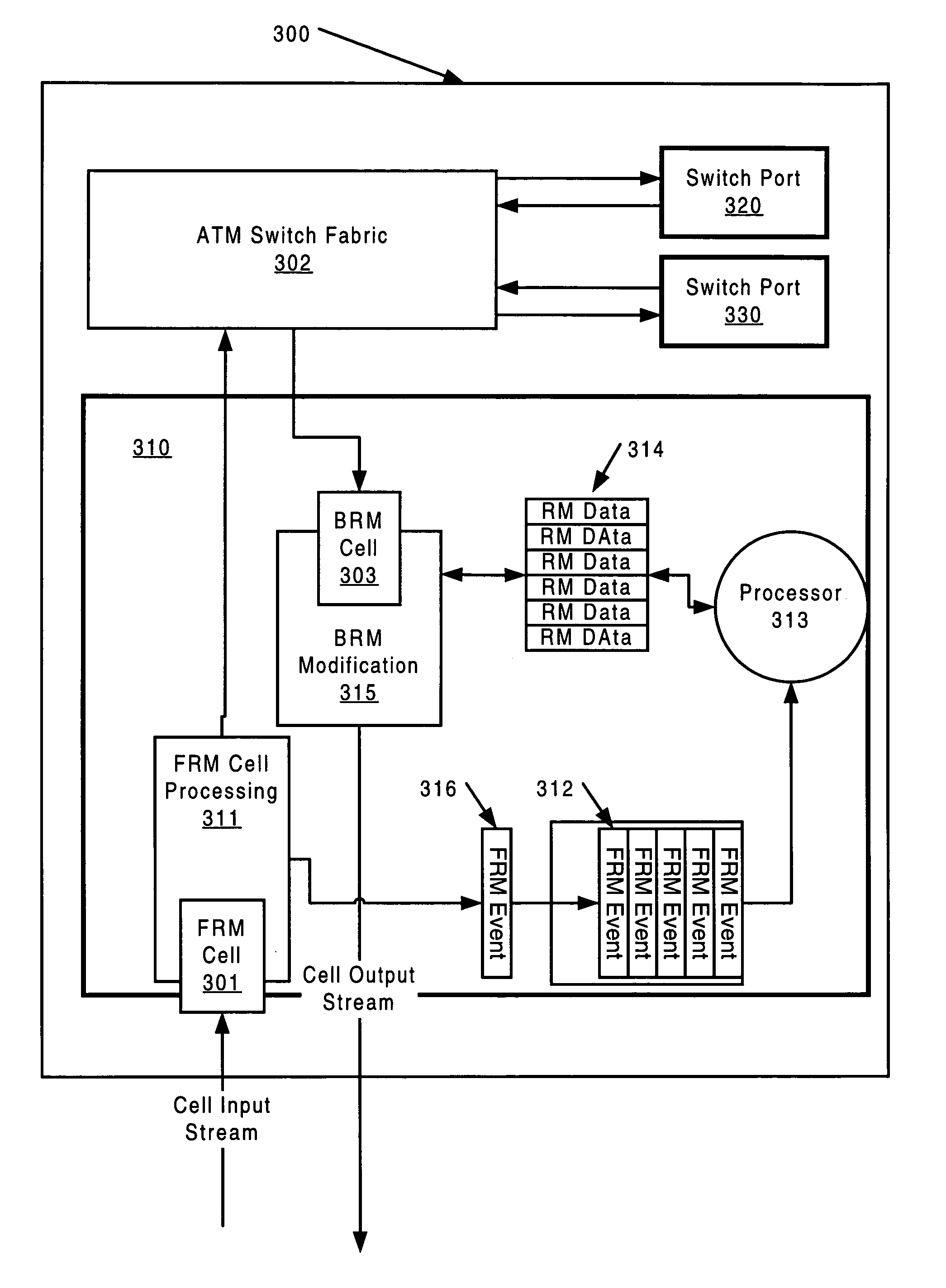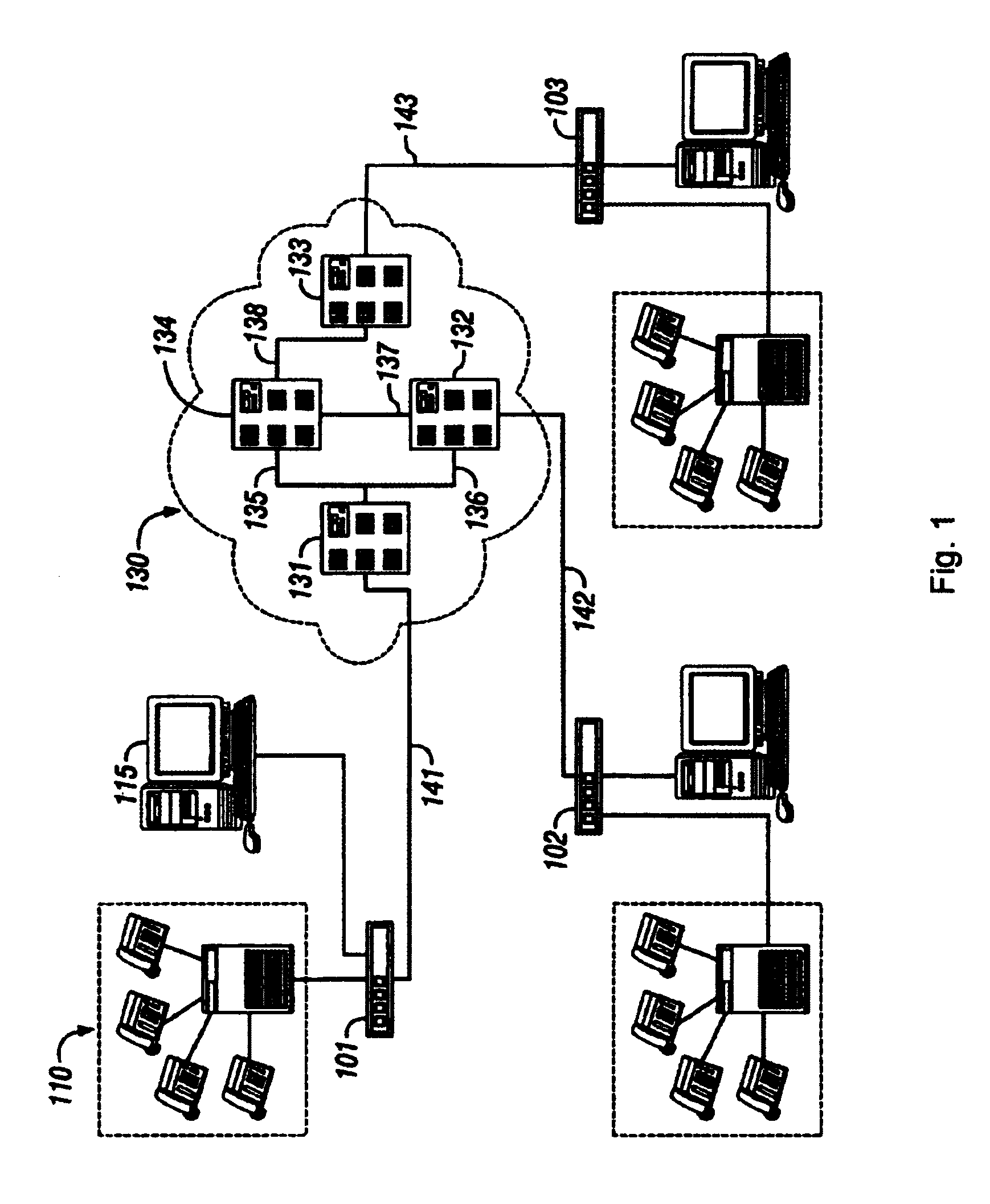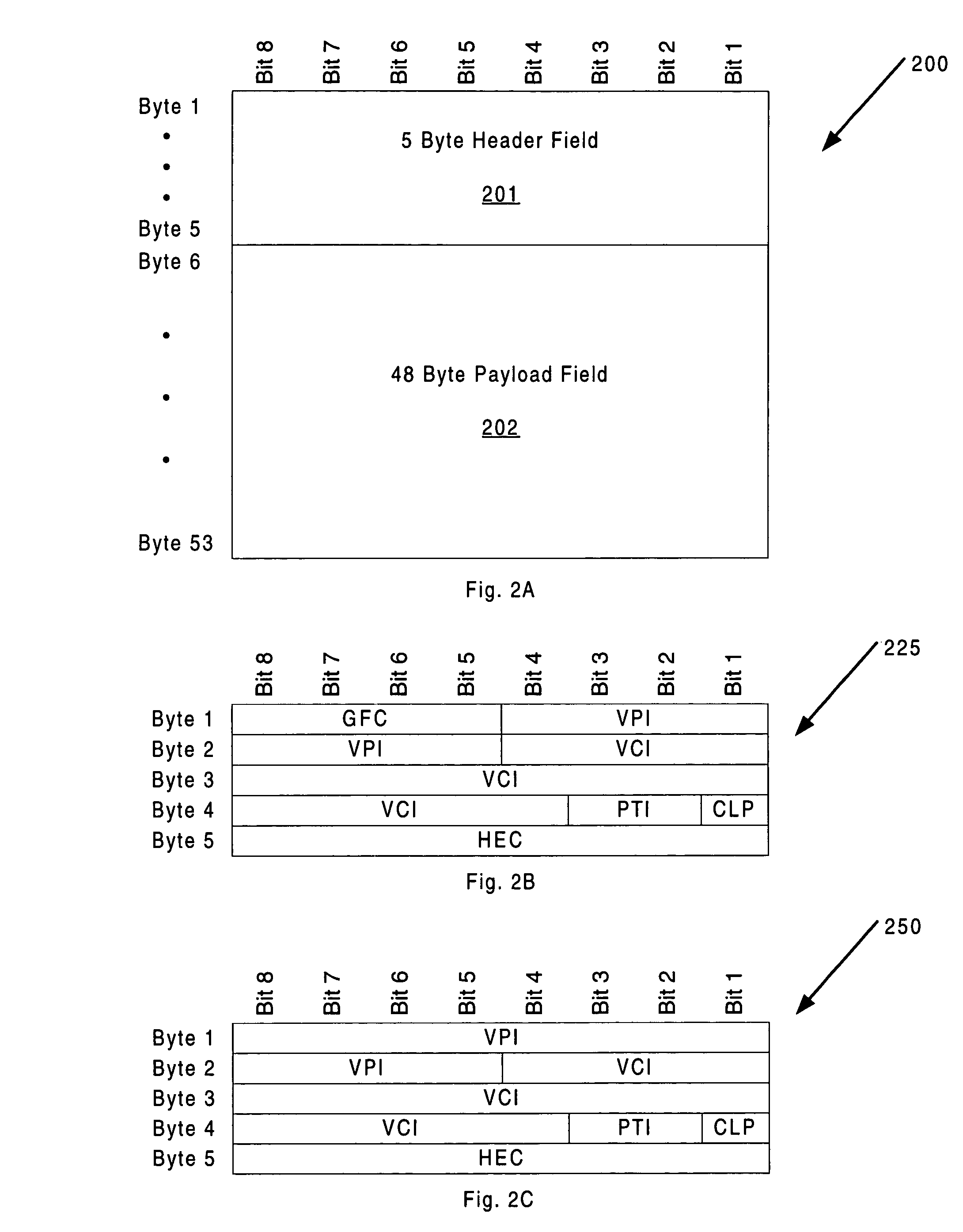Data cell traffic management
a data cell and traffic management technology, applied in data switching networks, instruments, frequency-division multiplexes, etc., can solve the problems of complex calculation of rate control data to be placed in backward resource management cells, and require significant processing resources, so as to reduce processing delays
- Summary
- Abstract
- Description
- Claims
- Application Information
AI Technical Summary
Benefits of technology
Problems solved by technology
Method used
Image
Examples
Embodiment Construction
[0016]In an ATM network, fixed-size packets of data, known as “cells,” are transferred between ATM switching devices (“switches”). An ATM cell includes a virtual channel identifier (VCI) and virtual path identifier (VPI) that identifies a bidirectional route (known as a “virtual channel” or a “virtual circuit”) between ATM network switches. Virtual channels provide the basis for both switching and multiplexed transmission. Routing of data frames between LAN nodes can be achieved by identifying a virtual channel and / or virtual path in the data frame's route designation information, converting the data frame to ATM cells, routing the cells through an ATM network using the identified virtual channel and / or virtual path, and reassembling the cell into a data frame prior to delivery of the data frame to its destination. The use of an ATM network in the routing of data frames may be transparent to the LAN nodes generating the data frame.
[0017]FIG. 1 is an exemplary ATM network. ATM cells ...
PUM
 Login to View More
Login to View More Abstract
Description
Claims
Application Information
 Login to View More
Login to View More - R&D
- Intellectual Property
- Life Sciences
- Materials
- Tech Scout
- Unparalleled Data Quality
- Higher Quality Content
- 60% Fewer Hallucinations
Browse by: Latest US Patents, China's latest patents, Technical Efficacy Thesaurus, Application Domain, Technology Topic, Popular Technical Reports.
© 2025 PatSnap. All rights reserved.Legal|Privacy policy|Modern Slavery Act Transparency Statement|Sitemap|About US| Contact US: help@patsnap.com



